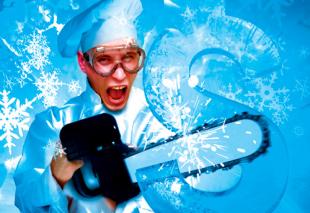

Price freeze

Increases in food costs are biting, but caterers are hitting back by adding value to their culinary offerings for meetings and events.
Soaring food costs and inflationary pressures are hurting manufacturers, suppliers and distributors where it matters - their pockets. Inevitably, this has led to rises in the cost of staging meetings or events where food is involved.
Event management companies (EMCs) and venues need to make a profit, but corporate planners need to justify the cost of events to their bosses.
And being in the Middle East doesn't help matters. With little arable land and low rainfall figures, the majority of food produce is imported.
It's a challenging situation for the entire meeting and event industry, according to groups and events sales executive for Le Méridien Mina Seyahi Beach Resort and Marina and the Westin Dubai, Pit Ludig.
"You need to take into consideration, not just in Dubai, but worldwide; prices increase on a daily basis," he said.
"There has been an increase since 2007 of 56% on the cost of poultry alone."
Catering teams, therefore EMCs, are having to adjust prices every six months compared to annually, which used to be the norm, a fact that needs explaining to clients.
"It is very difficult for hotels to restructure prices and it is important to explain to clients why they are paying more than they did the previous year, which is why adding value is essential," Ludig said.
A little creativity allows everybody a slice of the successful event pie, according to executive chef, InterContinental Hotels Group Dubai Festival City, Geoff Haviland.
"We absorb a lot of these market fluctuations into our menu, but we also look at customising our packages," he said.
"A soup and sandwich break can be something absolutely spectacular and it doesn't have to be expensive - it's down to how you package it."
The trend of providing live cooking stations also allows for customisation and theatre-like performances - an area where value can be added via the ‘wow' factor rather than expensive ingredients.
Have a clear idea about what type of catering you require
Consider cheaper food alternatives
Lighter lunches can save money and negates after-meal lulls
"A static display is boring, live fruit or ice carvings are the way forward - people love a bit of action," Haviland said.
"With coffee breaks, rather than having the standard we can have more innovative themes or live smoothie stations. It's a fairly minimal price that can make the buffet something special for guests."
An advantage in having to think about presentation and adding value to catered events is the improvement that can be made to the product.
"Having worked in Asia for three years, I know the buffets there are spectacular so we will have to lift our game if we want to compete with what they are offering," Haviland said.
"We have to be a little bit more innovative on how we present the product."
Key ingredient
Although theatrics and live service stations are a way of adding value to a catered event, the recipe for success fails if one key ingredient is missing - communication.
"Communication is key, but it has to be defined from the outset. You have to be confident of the package and make sure you communicate clearly because the guest will be annoyed if they turn up and get something they didn't expect," Haviland said.
Catering teams need to know the budget, dietary requirements and timings of when people need to be seated in the meeting room - a catered meeting or event is, as Haviland puts it, "a race".
In an attempt to avoid miscommunication, the InterContinental team provides photographic representations of the buffets and break out sessions.
"I think photographic representation is important. It helps to sell the product and explains to the guest what they are getting for different prices," Haviland said.
"You need full photographic representations of what the room set ups and table setting buffets lighting. It covers our back and they know what they are getting. Everyone has to be on the same track."
With little sign of the rise in food prices slowing, it would seem that venues and EMCs are going to have to keep their creative hats on and keep talking to planners for the foreseeable future.
"I think the growing trend is going to be more customised and personalised," Haviland said.
"And the more informed we are, the better we can maintain the costs. I can make sure there is less wastage and I maintain my profits without adding costs to the client," he concluded.
Instead of a table loaded with sandwiches, ask for a live sandwich station, where clients can order what they want
Provide fresh, gluten-free, rice paper and organic bread options to cater to varying client tastes
Provide a range of fillings and freshly prepared salads
Think of your client's needs. If it is a breakout session you do not want to keep them waiting when they have to return to the meeting